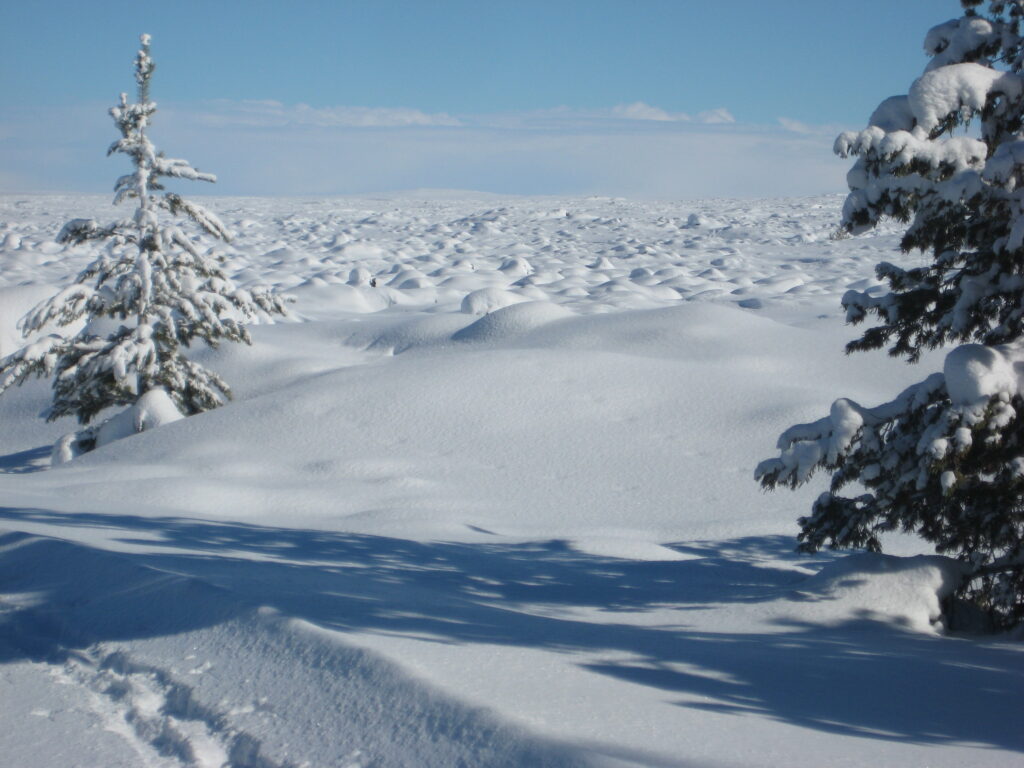
Tucked in a remote part of Idaho, between the Lost River Range and the Snake River Valley, there’s a slice of public land few people have heard of: Craters of the Moon National Monument. The monument was formed by the same hotspot responsible for the geothermal features in Yellowstone National Park. Over time, as the North American continental plate has drifted southwest over that hotspot, it has left an arc of volcanic activity in its wake, tracing from southeast Oregon to northwest Wyoming. The crust at Craters of the Moon passed over the hotspot an estimated seven to ten million years ago. However, the visible lava flows in the monument were formed during several eruptive periods only 15,000 to 2,000 years ago, when leftover heat from the hotspot was released during basin and range rifting. While this charred landscape was occasionally crossed by American Indians as well as pioneers seeking alternatives to the Oregon Trail, it has never hosted permanent human habitations.
 In the winter, Craters of the Moon boasts excellent cross-country skiing, and without crowds. When we arrived on a Thursday afternoon, we could see the tracks of only one other skier before us on the freshly groomed trail. Pillows of snow covered jagged, black rocks, gnarled trees, and volcanic cones, while fresh tracks revealed a surprising amount of wildlife living within the park. Each turn on the windy park road unveiled a new perspective. I expected a barren landscape; I discovered a fascinating tapestry of lava fields and sagebrush steppe grasslands, with spectacular views of high peaks in the Lost River Range. We were hooked, and returned a few days later to ski again, this time through several inches of fresh snow that had not yet been groomed.
In the winter, Craters of the Moon boasts excellent cross-country skiing, and without crowds. When we arrived on a Thursday afternoon, we could see the tracks of only one other skier before us on the freshly groomed trail. Pillows of snow covered jagged, black rocks, gnarled trees, and volcanic cones, while fresh tracks revealed a surprising amount of wildlife living within the park. Each turn on the windy park road unveiled a new perspective. I expected a barren landscape; I discovered a fascinating tapestry of lava fields and sagebrush steppe grasslands, with spectacular views of high peaks in the Lost River Range. We were hooked, and returned a few days later to ski again, this time through several inches of fresh snow that had not yet been groomed. 
While I visit geothermal features in Yellowstone National Park several times a year, Craters of the Moon National Monument offered a deeper view into the volcanic activity that created the landscape I call home. It also provided a much needed respite from the crowds that flock to Jackson for skiing, cowboy culture, and national parks. I was impressed by this little-known gem, and I plan to return.


